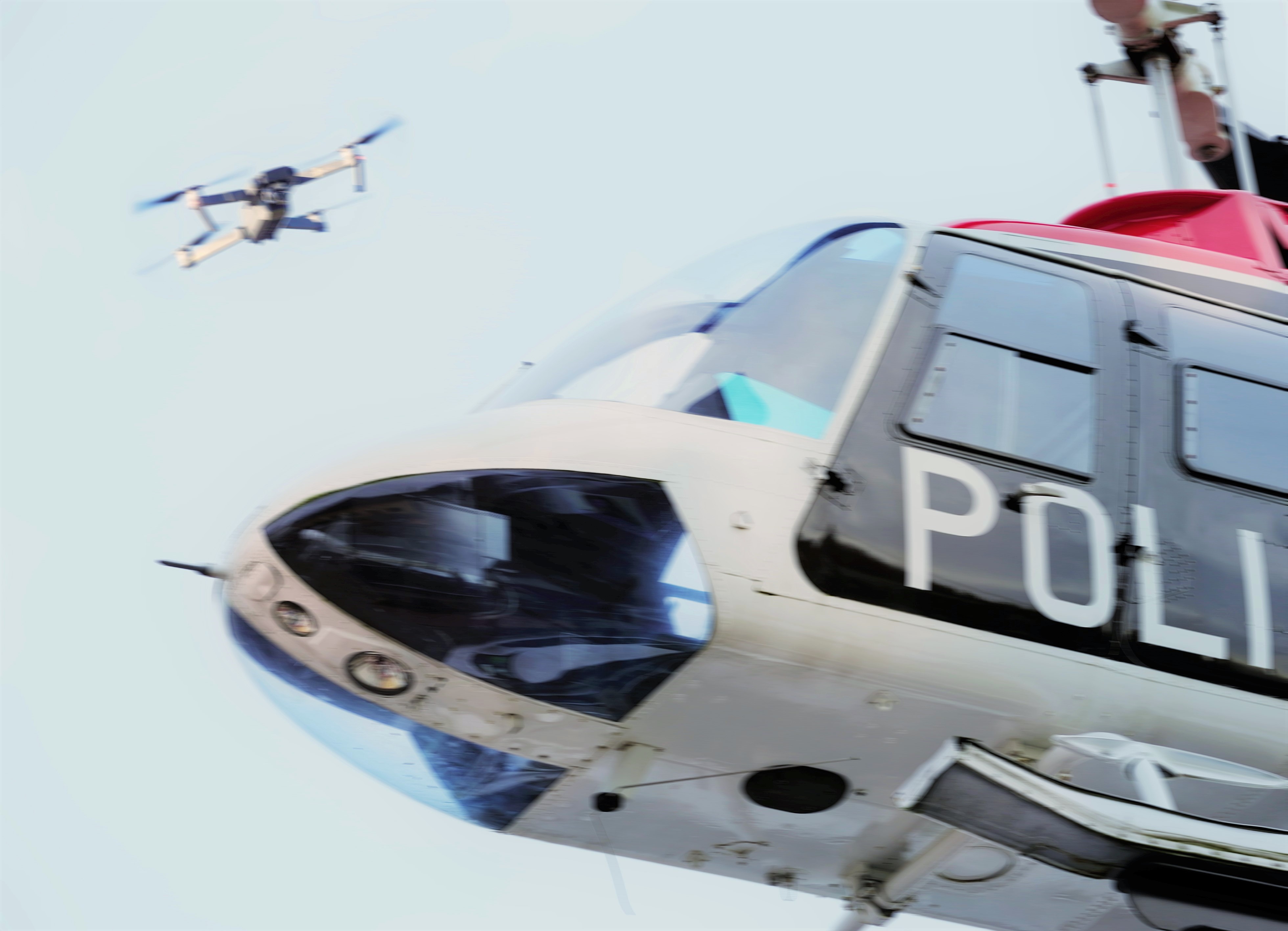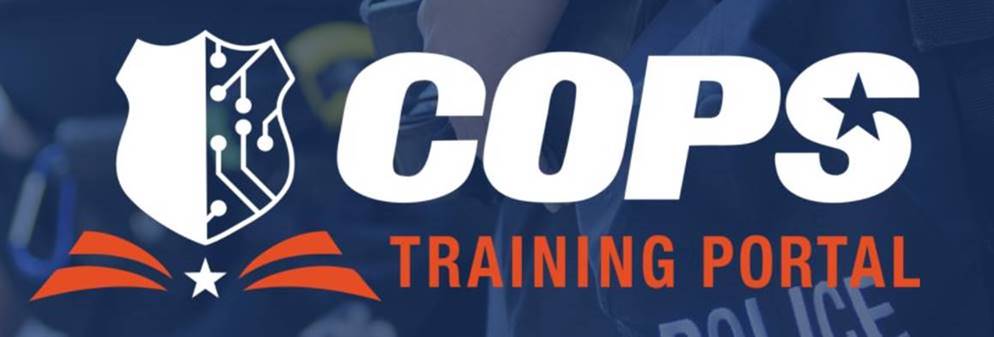Contact Us
To provide feedback on the Community Policing Dispatch, e-mail the editorial board at CPDispatch@usdoj.gov.
To obtain details on COPS Office programs, publications, and resources, contact the COPS Office Response Center at 800-421-6770 or AskCopsRC@usdoj.gov

U.S. Department of Justice
Office of Community Oriented Policing Services
Washington, DC 20530
 Unmanned Aerial Systems (UASs), more commonly known as drones, present an ever-expanding suite of solutions for law enforcement agencies across the country. UASs can be used to increase safety in disaster management, search and rescue operations, suspect pursuits, night or indoor operations, and crowd control. UASs can increase efficiency, aid interagency responses, and help in de-escalation efforts by providing information without exposing personnel to risk. However, UASs also expose agencies to new liabilities: since all airspace is federal airspace, agencies deploying UASs need to be in compliance with federal regulations from the Federal Aviation Administration (FAA), the Federal Communications Commission (FCC), and the Department of Justice (DOJ). UASs, as a visible and often misunderstood technology, can also strain relationships with community members. In order to address these issues, the COPS Office has recently released two resources for state, local, Tribal and territorial law enforcement agencies interested in starting a UAS program.
Unmanned Aerial Systems (UASs), more commonly known as drones, present an ever-expanding suite of solutions for law enforcement agencies across the country. UASs can be used to increase safety in disaster management, search and rescue operations, suspect pursuits, night or indoor operations, and crowd control. UASs can increase efficiency, aid interagency responses, and help in de-escalation efforts by providing information without exposing personnel to risk. However, UASs also expose agencies to new liabilities: since all airspace is federal airspace, agencies deploying UASs need to be in compliance with federal regulations from the Federal Aviation Administration (FAA), the Federal Communications Commission (FCC), and the Department of Justice (DOJ). UASs, as a visible and often misunderstood technology, can also strain relationships with community members. In order to address these issues, the COPS Office has recently released two resources for state, local, Tribal and territorial law enforcement agencies interested in starting a UAS program.
Community Engagement
The COPS Office released "Community Engagement Strategies for State, Local, Tribal, and Territorial (SLTT) Law Enforcement Unmanned Aircraft System (UAS) Programs" on March 15, 2022. The guide, which was produced by the Police Executive Research Forum, uses examples drawn from members of the COPS Office State, Local, Tribal and Territorial UAS Working Group to help similar agencies host conversations with communities prior to launching a drones program. Community support was identified as a necessary component of a successful program by nearly every member of the working group; many members spoke candidly about how failing to do so had damaged or delayed efforts to integrate UASs into their public safety portfolio.
 James Grimesly, Executive Director of Advanced Technology Initiatives at the Choctaw Nation of Oklahoma and a member of the working group, described the outreach efforts they undertook to prepare tribal members for the beginning of their UAS programs. Community members commonly report that the use of drones feels intrusive or oppressive. Mr. Grimesly and his team held demonstration flights with the UASs. They hovered the UAS at a given elevation and asked people to raise their hands if the unit made them feel uncomfortable. "What we found,” said Grimesly, "was that people pretty consistently felt uncomfortable when the drone was 50, 100 or 150 feet overhead. Once the drone was 200 feet or higher, people felt more comfortable with it.” They also held Drone Camp for the tribal children, showing them how to operate units and allowing them to get hands-on experience. The efforts, enacted prior to launching the program and with the consent of the community, were a success. "By the time we were done,” said Grimesly, "folk were asking how soon we could get the drones in the air.”
James Grimesly, Executive Director of Advanced Technology Initiatives at the Choctaw Nation of Oklahoma and a member of the working group, described the outreach efforts they undertook to prepare tribal members for the beginning of their UAS programs. Community members commonly report that the use of drones feels intrusive or oppressive. Mr. Grimesly and his team held demonstration flights with the UASs. They hovered the UAS at a given elevation and asked people to raise their hands if the unit made them feel uncomfortable. "What we found,” said Grimesly, "was that people pretty consistently felt uncomfortable when the drone was 50, 100 or 150 feet overhead. Once the drone was 200 feet or higher, people felt more comfortable with it.” They also held Drone Camp for the tribal children, showing them how to operate units and allowing them to get hands-on experience. The efforts, enacted prior to launching the program and with the consent of the community, were a success. "By the time we were done,” said Grimesly, "folk were asking how soon we could get the drones in the air.”
The One Hour Crash Course
 On March 8, 2022, the COPS Office launched "Use of Drones by Public Safety Agencies: An Introduction,” a one-hour, interactive, web-based course produced by the Virginia Center for Policing Innovation (VCPI). The curriculum includes the most up-to-date information and cases from lawmakers, subject matter experts, and practitioners on the best way to approach issues such as regulatory compliance, use cases, project management, staffing, and security concerns. The curriculum is available at no cost through the COPS Office Training Portal.
On March 8, 2022, the COPS Office launched "Use of Drones by Public Safety Agencies: An Introduction,” a one-hour, interactive, web-based course produced by the Virginia Center for Policing Innovation (VCPI). The curriculum includes the most up-to-date information and cases from lawmakers, subject matter experts, and practitioners on the best way to approach issues such as regulatory compliance, use cases, project management, staffing, and security concerns. The curriculum is available at no cost through the COPS Office Training Portal.
Subscribe to Email Updates
To sign up for monthly updates or to access your subscriber preferences, please enter your email address in the Subscribe box.






